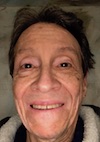 [This is the fifth and final installment of a decade-by-decade selection of material from my archives, a mini-survey of my work since 1970 that I undertook to energize myself for a return to regular production here at the blog by reminding myself of the pleasures of “having written.” It may also serve to provide readers with some sense of how my work and its craft underpinnings have evolved over the past half-century. (For the fourth in the series, click here.)
[This is the fifth and final installment of a decade-by-decade selection of material from my archives, a mini-survey of my work since 1970 that I undertook to energize myself for a return to regular production here at the blog by reminding myself of the pleasures of “having written.” It may also serve to provide readers with some sense of how my work and its craft underpinnings have evolved over the past half-century. (For the fourth in the series, click here.)
By 2010, when I wrote the piece below, I found myself with few opportunities to publish in print. Assorted factors, especially the internet, had radically disrupted the infrastructure that formerly supported cultural commentary like mine.
However, I had initiated this blog in the spring of 2009 and, at least by my own measure, by 2010 had hit my stride in generating material for it. Disregarding the conventional wisdom which insisted that short and simple ruled in web writing, and especially in blogging, I found this new format and platform ideal for what I came to think of as informed long-form cultural journalism about photography and related matters.
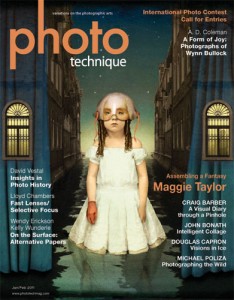 To date I have published 522 such posts of my own, plus 63 Guest Posts. You can access all of these by year, month, and category through the drop-down menus in the right-hand column of this or any post. They range widely in subject, from photo education to digital imaging, from the dismantling of the unique Polaroid Collection to the imagery of the 2012 and 2016 presidential campaigns, and from the “Pepper-Spray Cop” meme to Robert Capa’s D-Day photographs.
To date I have published 522 such posts of my own, plus 63 Guest Posts. You can access all of these by year, month, and category through the drop-down menus in the right-hand column of this or any post. They range widely in subject, from photo education to digital imaging, from the dismantling of the unique Polaroid Collection to the imagery of the 2012 and 2016 presidential campaigns, and from the “Pepper-Spray Cop” meme to Robert Capa’s D-Day photographs.
As an indicator of what else I wrote during that period, I offer this assessment of Wynn Bullock, written to accompany the first-ever exhibition of his work in China, which I curated for the See+ Gallery in Beijing. The show ran from March 20-May 19, 2010; sales there set worldwide record prices for vintage Bullock prints. (Click here for a brief account of that exhibition, which paired Bullock with Harold Feinstein.) Subsequently I published it in the January 2011 of the magazine Photo Technique: Variations on the Photographic Arts.
Click here for the Wynn Bullock website initiated and maintained by his daughter Barbara. — A.D.C.]
•
“A Form of Joy”:
The Photographs of Wynn Bullock
In Wynn Bullock we have the curious case of a recognized American master photographer whose work is included in over 90 major museum collections around the world, who received substantial critical acclaim during his lifetime, who published numerous books, whose name appears in all the standard histories — and who has slipped, at least temporarily, into obscurity. The time is surely ripe for photography’s now international and rapidly expanding audience to rediscover and reconsider him.
Born in Chicago, Illinois on April 18, 1902, Bullock grew up in California, where his family had moved during his childhood. He came to photography not as a young man but as a mature adult, after a successful career as a concert singer that brought him success on Broadway and the opportunity to pursue musical studies in Paris. During the course of his time in Paris in the late 1920s, he found himself inspired by the work of the Impressionists and Post-Impressionists, especially the painter Paul Cézanne, as well as by the work of the Hungarian artist/photographer László Moholy-Nagy and the American artist/photographer Man Ray. This stimulated him to buy the first of several cameras and begin to photograph avocationally.
Bullock continued his musical studies and hobbyist photography in Milan, Italy, and Berlin, Germany in 1930. Returning to the U.S. from Europe in 1931 to manage his wife’s family business matters in West Virginia during the Great Depression, he studied law for a short period. During that time, the realization that, as a vocalist, he would never be more than an interpreter of the music of others led Bullock to decide to give up his singing career. He relocated to California in 1937, entering law school once again — but only briefly. Instead, he elected to focus on a career as a photographer.
Attending the Los Angeles Art Center School, Bullock studied under Edward Kaminski, an important photo-educator who influenced several generations of photographers and with whom he developed a close relationship. Kaminski’s teaching emphasized process experimentation of all kinds. (Todd Walker studied with Kaminski from 1939-41. Lee Friedlander was another of Kaminski’s students, from 1953-55.) Bullock graduated in 1940; he recalled subsequently that his first exhibition, at the Los Angeles County Museum of Art in 1941, consisted entirely of “the work that had been rejected by the [Art Center] school, except Kaminski. … It was all solarization and experimental work.”
In 1940 he also studied with Alfred Korzybski, the founder of the discipline known as general semantics, whose ideas on the relationship between language, thought, and perception — including visual perception — greatly affected Bullock’s evolving philosophy. “At forty-two I decided to become a photographer because it offered a means of creative thought and action,” he would later say. “I didn’t rationalize this, I just felt it intuitively and followed my intuition, which I have never regretted.”
Bullock founded Arrow Photo, a photography supply and finishing business in Santa Maria, California which he owned from 1943 until 1952. In 1946, he obtained the photo concession at Fort Ord, a military base, and moved to the Monterey Peninsula, where he continued to earn a living as a commercial photographer until 1967. He also pursued his own goals as a creative photographer, experimenting continually. (For his technical innovations in photography, he was awarded patents in the U.S., Canada, and Great Britain.) In 1948 he met Edward Weston, also living in California, who along with Ansel Adams had spearheaded the Group f/64 and pioneered modernist “straight” or “pure” photography in the U.S. starting in the 1930s. This began a friendship that lasted until Weston’s death in 1958 and deeply influenced Bullock’s work as a photographer.
•
To those who know Weston’s work and compare it to Bullock’s, this may seem a peculiar sense of kinship; their differences were at least as notable as what they shared. They had in common a reverence for the natural world, and a belief that it would reveal its complexities and mysterious order to the patient observer (including the observer with a camera). They had no interest in scientific description; they sought to register the spirit of their subjects on film. As Bullock put it, “I didn’t want to tell the tree or weed what it was. I wanted it to tell me something and through me express its meaning in nature.”
They also believed that photographic film and paper could serve as effective vehicles with which to discover and communicate to others the secrets of the visual world, a faith they centered particularly around the large-format 8×10-inch camera, black & white sheet film, and the interpretive gelatin-silver print made from that film. By the time Bullock began his work in photography this set of ideas about the medium had become a powerful paradigm. Some practitioners used smaller cameras, a few used larger ones, but at mid-century in post-World War II America this belief system had become widespread among photographers. Bullock brought to this conception of photography as a tonal art form the eye and ear of a trained and gifted former musician.
Where Weston and Bullock diverged was in the range of latitude they allowed themselves for exploration within those parameters. Weston, like Adams and most of the Group f/64 “purists,” rejected all experimental darkroom procedures for film development and subsequent printmaking; for them, even such purely photographic techniques as photomontage and solarization were anathema. This was the American version of modernist photography, with strict rules regarding photographic practice.
•
Bullock, by contrast, had absorbed from Moholy-Nagy and Man Ray (and perhaps from his mentor Kaminsky) a more open-ended, European version of photographic modernism. Though the comparison may seem odd, I consider Bullock a West Coast counterpart to Ralph Eugene Meatyard (1925-1972), the Lexington, Kentucky-based optician. A generation younger than Bullock, Meatyard died prematurely, but his productive years are almost coterminous with Bullock’s, his range of intellectual interests as wide (and overlapping), his explorations of the medium’s possibilities as diverse.
Like Meatyard, Bullock felt no inhibitions about investigating photography’s inherent capacities. He accepted photomontage, solarization, the photogram, light drawing, the negative print, the blur resulting from long time exposure, and even the creation of a synthetic negative for the production of prints as legitimate methods, seeing each as part of the medium’s inherent and distinctive assortment of tools, materials, and processes. His ability to reconcile both these approaches to photographic praxis, the European and American versions of modernism, has few parallels in the field. The consequent breadth of his investigation of the medium makes him one of the most experimental photographers working in the U.S. in his time.
•
And though Weston and Adams would try their hands at color photography before abandoning it, Bullock would pursue it energetically in a series of color abstractions that only now, more than three decades after his death, have begun to make their presence known. For these color works Bullock constructed small assemblages of colored glass objects in his Monterey, California studio, illuminating them in different ways and then photographing not the objects themselves (with few exceptions) but the colored light effects they generated. He also changed instruments for this project, choosing to register the images with a 35mm. tripod-mounted Exakta camera loaded with Kodachrome color slide film, which yields a direct color transparency.
Bullock made a few prints from his transparencies, but did not find the papers then available for color printing satisfactory. (The limited-edition digital prints made from his transparencies and issued recently by his estate are the first versions of these works to become widely available). Perhaps due to his disappointment in the available means for printing color works, Bullock envisioned and experimented with the possibility of projecting them, potentially with musical accompaniment. He never fully materialized such a presentation.
His interest in this projection approach to color may have found its inspiration in the “Lumia” projections of the Danish-American artist Thomas Wilfred (1889-1968), whose installations of constantly changing patterns of colored light and performances on his “Clavilux” received considerable attention in the 1930s and 1940s. (For more information, see Lumia: Light Art, the website devoted to Wilfred’s work.) Bullock could have encountered Wilfred’s work in San Francisco, where it was shown in 1938, or in New York, where one of Wilfred’s pieces was installed permanently at the Museum of Modern Art.
Bullock concentrated on this investigation of color to the exclusion of virtually all else from 1960-64, then returned to working in black & white. In the late 1960s he changed instruments once again, taking up the recently introduced Rollei SL66 2-1/4 single-lens reflex, which gave him the ability to hand-hold his camera while providing a large enough negative to satisfy his demands as a printmaker.
His ceaseless experimentation notwithstanding, the work of Bullock’s that first brought him to wide attention from the general public built on the newly established model of the Group f/64. When visitors entered the monumental exhibition curated by Edward Steichen for the Museum of Modern Art, “The Family of Man,” which opened in New York in January of 1955 before starting its world tour, the first two images that greeted them were by Wynn Bullock: “Let There Be Light” from 1954 and “Child in Forest,” made in 1951. Produced in multiple copies, the show traveled internationally, touring for seven years in multiple sets throughout 38 countries. An estimated nine million people attended those various showings, well into the 1960s.
Both those Bullock images also became the first two images in the accompanying catalogue, undoubtedly the most widely distributed and best-loved book in the history of photography. This did not bring him wealth, but it established his reputation as a photographer on a par with Weston and Adams, ensuring a level of recognition that made it possible for him to exhibit, publish, teach, write, and offer public lectures about his work and his complex theories of photography. (“Let There Be Light” was voted the most outstanding image in the entire exhibition by the 65,000 visitors to its presentation at the Corcoran Gallery of Art in Washington, DC in 1956.)
Unquestionably, Bullock achieved his goal of forging a distinctive body of germinal work in the medium to which he had devoted the second half of his life. His influence on the field has proved profound, and enduring. Ansel Adams said of him, “His eye has sharpened mine. His sympathies and empathies with the world have strengthened mine. Because of Wynn Bullock’s work, I understand more of photography, more of art, and more of the human spirit.” Jerry Uelsmann wrote, “Wynn Bullock is a uniquely gifted man whose personal photographic search has produced images that expand not only the possibilities of photography, but of life itself.”
Illness made it impossible for Bullock to photograph or print during his last two years. Instead, between 1973 and 1975 he spent his time reading deeply in philosophy — Korzybski, Hegel, Lao Tzu — and probing in new writings his understandings of the creative process itself and the concepts of space, time, and event as they related to photography. Through his photographic researches, his study of eastern and western philosophy, and his own meditative practice he had come to inhabit what anthropologists call an animate universe — a cosmos in which everything is alive. “My thinking,” he declared, “has been deeply affected by the belief that all things are some form of radiant energy. Light is perhaps the most profound truth in the universe.” Photography, which takes light as its raw material, had evolved for him into a doorway opening onto the universal mysteries.
Wynn Bullock died of cancer on November 16, 1975, in the midst of that decade’s “photo boom.” His work has not benefitted notably from the heightened status of photography as a creative medium in the subsequent decades — no full-scale retrospective, no substantial critical reconsideration. Yet attention seems, at long last, to have begun to return to this germinal figure, thanks in no small part to the determined efforts of his daughter, Barbara Bullock-Wilson, and her husband Gene. (Barbara is the child in Bullock’s iconic “Child in Forest.”)
 In the spring of 2010, the first showing of Bullock’s “color light abstractions” took place, at the Center for Photographic Art in Carmel, CA — a show that has since traveled to the Center for Creative Photography in Tucson, AZ, and will make other stops as well. [Note: I wrote the essay for the accompanying catalog of that show. — A. D. C.] Even more significantly, the University of California, Santa Cruz simultaneously announced an initiative “to preserve and share the Bullock Family Photography Archive as a core part of the UCSC University Library Special Collections and Archives.” The goal: to raise $3 million to enhance the UCSC Library’s Photography Collection, the bulk of it earmarked for the acquisition of 450 vintage b&w prints by Bullock, 500 prints by his wife Edna (who began photographing only after his death, and had a substantial 20-year career of her own), and their daughter Barbara Bullock-Wilson’s extensive research files on her parents’ work, plus papers, memorabilia, and other invaluable material.
In the spring of 2010, the first showing of Bullock’s “color light abstractions” took place, at the Center for Photographic Art in Carmel, CA — a show that has since traveled to the Center for Creative Photography in Tucson, AZ, and will make other stops as well. [Note: I wrote the essay for the accompanying catalog of that show. — A. D. C.] Even more significantly, the University of California, Santa Cruz simultaneously announced an initiative “to preserve and share the Bullock Family Photography Archive as a core part of the UCSC University Library Special Collections and Archives.” The goal: to raise $3 million to enhance the UCSC Library’s Photography Collection, the bulk of it earmarked for the acquisition of 450 vintage b&w prints by Bullock, 500 prints by his wife Edna (who began photographing only after his death, and had a substantial 20-year career of her own), and their daughter Barbara Bullock-Wilson’s extensive research files on her parents’ work, plus papers, memorabilia, and other invaluable material.
“Creativity is an ode to life,” Bullock wrote toward the end of his life. “It is not a form of entertainment. It is a form of joy.” Perhaps the time is ripe at last to take the full measure of the distillations of his joy that he left behind.
•
This post sponsored by a donation from Carlyle T.
•
Special offer: If you want me to either continue pursuing a particular subject or give you a break and (for one post) write on a topic — my choice — other than the current main story, make a donation of $50 via the PayPal widget below, indicating your preference in a note accompanying your donation. I’ll credit you as that new post’s sponsor, and link to a website of your choosing.

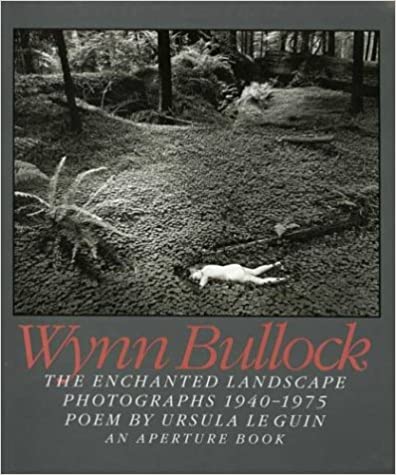
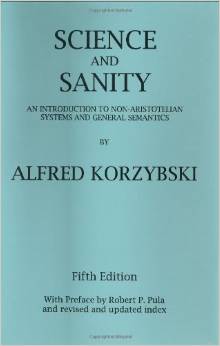
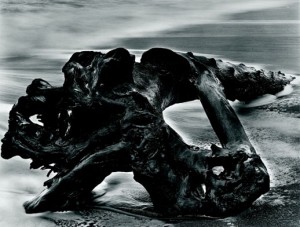
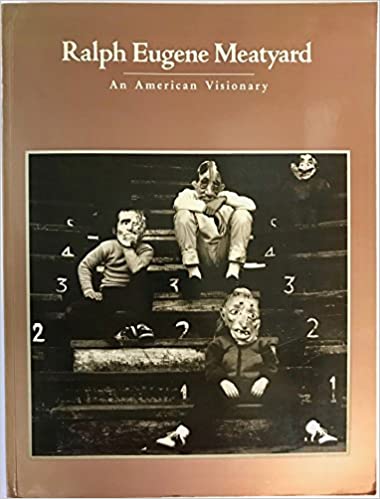
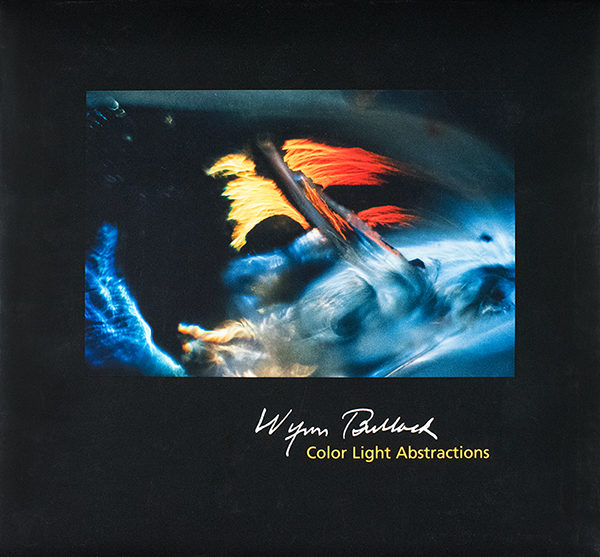
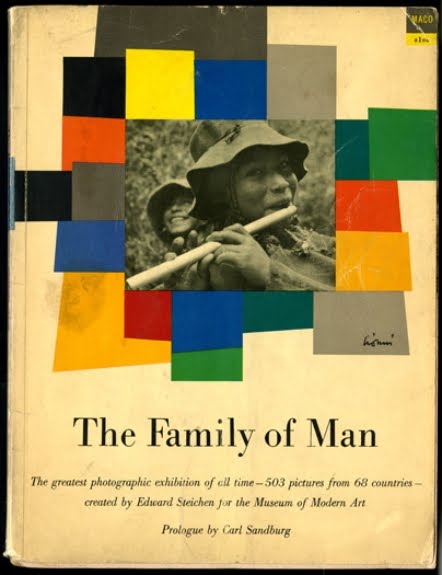
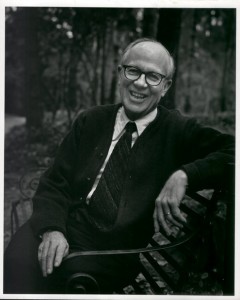




It was good to read this article again. You have had a long-standing understanding and appreciation of my father’s work which this piece clearly reflects. I just turned 75 this month and sharing my parents’ artistic legacies continues to be a central activity in my life.
I’m still working on placing the Bullock Family Photography Archive, but funding remains elusive. It is a cultural treasure that I yearn to see safely and meaningfully preserved for future generations – just as I hope your own life’s work will be. Your contributions to the field of photography have been unparalleled, and it is important that your distinctive voice lives on to challenge and enrich the broadest possible audience.
With my very best wishes, Barbara
Thanks for your good words about my work.
I got to meet your father only once, in passing, at a national conference of the Society for Photographic Education, shortly before his death.
Those were the days when SPE had no formal portfolio-review process. Photographers simply found spaces in which to sit down and show each other their work.
A close friend and colleague of mine, the late Richard Kirstel, a photographer and teacher (and master printer), who admired Wynn’s work enormously, sought him out for comment on his work, which involved the nude and the erotic and was therefore quite controversial. They found a quiet corner and spent a good hour looking at Richard’s prints and talking.
Over a drink later that afternoon I asked Richard how it had gone. He stayed silent for a minute, then said, “When he finished looking at my pictures he asked me, ‘Why aren’t you famous?'”
That comment sustained Richard through some very difficult times.
Interesting to read this quick biography of Wynn Bullock, who I learned about initially from his wife (widow), Edna.
Susan Friedman and Martha Casanave put me in touch with Edna when I was putting together Erotic by Nature, my collection of erotic writing and photography, in the mid 1980s. I was a nobody with no financial backing, but Edna responded to my letter warmly, offering to get together with me at her home (I think it was in Carmel) to show me some of her photos. I explained what I wanted to do with the book (offer positive erotic and fine art sexual photography and writing as an alternative to pornography), and she took me at my word, offering whichever photos I wanted to use for no fee (I had, literally, no money to offer) except for the possibility of profit-sharing royalties if the book ever sold. (As it turns out, she and her estate ended up getting a little over $600 over the following 15 years, much to everyone’s surprise.)
While she showed me an extensive collection of her prints (and some of Wynn’s), she told me stories of the two of them photographing on Edward Weston’s favorite sand dunes, the scandals and misunderstandings that swirled around the beautiful photo of the nude little girl in the woods, and flirted with me outrageously which, coming from a woman in her 70s when I was a mere 40, I found totally delightful.
When Erotic by Nature was published in 1988 we organized an erotic reading event in Santa Cruz to publicize the book. I believe it was at an erotic boutique on Pacific Avenue, the main drag in Santa Cruz. The store was small, with almost everyone sitting crowded on the floor, but I saved two of the scarce chairs in the front for Edna and Barbara, which Edna appreciated. Not sure what she would think of what was about to follow, I warned her that some of the readings might be pretty intense, and they were — covering BDSM, and all sorts of edgy scenes, many of the readers delighting in being both thoughtful and outrageous. Standing in the back, I kept my eye on Edna in the front row, nose to nose with those who were reading, but couldn’t decipher how she was responding. After the reading ended, as she and Barbara were leaving, she took me aside, eyes glowing, and said, forcefully, to reassure me: “I loved it, David! Every single word!”
Edna and I stayed loosely in touch afterwards, and Barbara also continued to thoughtfully reach out to me, after Edna died. She was a remarkable woman, and it was a thrill to meet her and work with her.
Sorry to ramble on, but hers is quite a sweet memory from that time, all brought back by your post about Wynn.
Thank you, David, for sharing this wonderful reminiscence. Mom loved being a part of your project and you depicted her sparkling, generous, zestful, embracing nature so well. I hope you are doing well wherever you are.
With fond memories and best wishes, Barbara